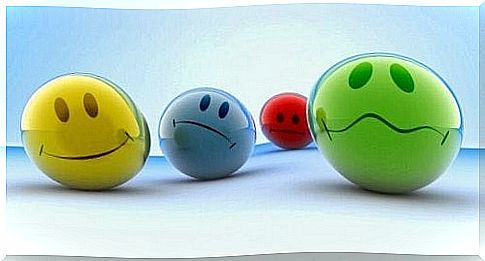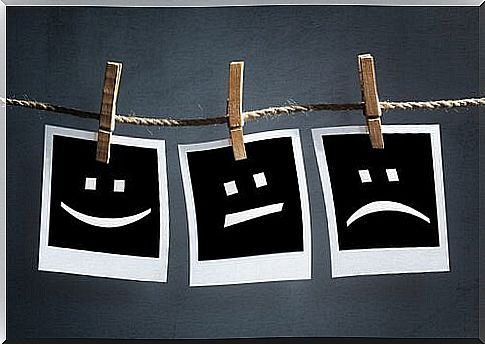Do You Know What The Functions Of Emotions Are?

John Marshall Reeve is an author who has contributed greatly to studies on motivation and emotions over the decades. Reeve believes that emotions have three main functions: adaptive, social, and motivational.
Let’s take a look at each of these functions of emotions, what they consist of, and why it can sometimes be helpful to keep a certain emotion inside.
Pride, fear, joy, anger and shame are emotions that have a threefold effect on people. On the one hand, they cause subjective consequences, which we often express in the form of feelings or emotional states.
In addition, they can also have physiological effects. By this we mean the changes that experiencing these emotions causes in our cells, tissues, organs and body in general. Finally, these emotions can also motivate behavior.
The three functions of emotions
The adaptive function
One of the main functions of emotions is to prepare the body for action. In this sense, every emotion, whether positive or negative, is useful in its own way.

The adaptive functions of emotions allow us to take effective action when necessary. Emotions allow us to spring into action and have enough energy to accomplish a task or flee when necessary.
For example, when we see someone crying, a natural emotional response takes place in us that makes us go up to the person and ask them what’s going on.
Charles Darwin also pointed out the importance of emotions as an adjustment mechanism. Darwin viewed emotions as facilitators of appropriate behavior. To better understand the adaptive functions of emotions, we have tabled the functions of each primary emotion below (P. Ekman):
| Primary emotions | Adaptive function (use) |
| Luck | Feeling connected to others |
| disgust | Rejection |
| Fury | Self defense |
| Fear | Protection |
| Surprise | Research |
| sadness | Reintegration |
The social function
‘I’m ashamed’, ‘I’m overjoyed’, ‘This makes me nervous’. All these expressions refer to emotional states of mind. Through emotions we convey our emotional state of mind and express what is going on inside us. In addition , they facilitate social interaction.
Emotions help those around us predict our behavior and enable us to predict their behavior. Because of this, emotions are very useful and necessary in interpersonal relationships.
Sometimes we find it difficult to describe our emotions in words. However, it’s important to remember that we don’t just express emotions verbally.
There are more ways to observe how someone is feeling than to ask. This is helpful because it can be difficult for the person to express exactly how they feel.
By observing a person’s body position or facial expressions, we can sometimes get a clearer picture of how he is feeling than by asking him. Often a certain attitude or facial expression is much more informative than just saying, “I’m sad.”

To express or not to express your emotions
However , not expressing emotions or holding back certain emotions can sometimes also fulfill a social function. This is especially true if hiding an emotion or not showing how we really feel can help keep a friendship from ruining.
In these cases, the cure is worse than the disease. Sometimes it’s better not to let them know how we really feel so we don’t hurt or upset the other person.
In general, however, bottling up emotions causes misunderstandings and a significant physiological burden. Not only can this be very harmful, but it can also be avoided.
The expression in a healthy way can therefore offer very many benefits our emotions and feelings. Expressing our emotions also helps us strengthen our social support network.
social contagion
The concept of social contagion may be one of the reasons why we are more attracted to positive people than to negative ones. Social contagion refers to the idea that emotions can be spread from person to person.
Humans are genetically predisposed to social contagion. We get carried away by the emotions of others. However, there are people who are better able to convey and absorb emotions.
The motivational function
The last of the three functions of emotions is the motivational function. The relationship between motivation and emotions is bi-directional. There is constant feedback between emotions and motivation and vice versa.
On the one hand, any kind of motivational behavior triggers an emotional response. On the other hand , emotions fuel motivation. Motivation often influences the extent to which we can express our emotions, their intensity, and how we let them guide our behavior in favor of ourselves or something else.
For example, if we enjoy having coffee with a certain person every now and then, we will be more motivated to spend time with that person.
On the other hand, a bad experience with someone will trigger a negative emotional reaction that will make us think twice before meeting that person again.

Now we know a little more about the main functions of emotions. Once you are aware of these functions, it is easier to take into account the physiological changes that occur during the day.
How many emotions do you experience in a day? Then just think how many changes occur in your body every day as a result of your emotions!









